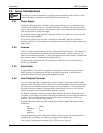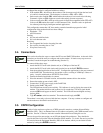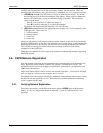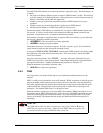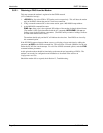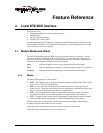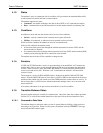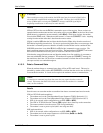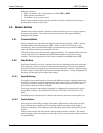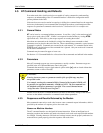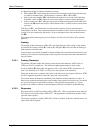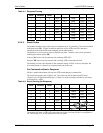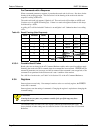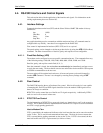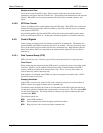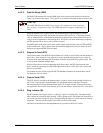
Feature Reference DART 300 Modem
Page 20 2110212 Rev 1.0
PPP mode transitions:
• DTR is de-asserted, with a configuration to use DTR (&D1 or &D2).
• PPP negotiates command state.
• The modem is reset or power-cycled.
Details of these methods, and the messages issued by the modem to indicate the transition are
described in the sections on each mode.
4.2. Modem Buffers
Communication with the modem is buffered to allow the modem to provide a variety of features
and speed configurations. This section provides an introduction to the types of buffering
performed by the modem.
4.2.1. Command Buffer
When in command state, the modem will buffer the input from the host until a <CR> is entered.
The buffered data can be edited using the <BS>. There is a limit of 255 characters to one
command line. If the command buffer length is exceeded the modem will return the ERROR
result code without executing any commands in the line.
This buffer is distinct from the data receive and transmit buffers. The command buffer retains the
contents of the last issued command until the AT command prefix is received for the next
command. This allows repeating of the last issued command by entering A/ instead of AT.
4.2.2. Data Buffers
Data being transmitted or received is buffered in several ways depending on the mode and nature
of the connection. Some caution must be taken when disconnecting to ensure that any buffered
data in the modem has been properly processed prior to breaking the connection. Specific settings
for buffer controls are described in the relevant commands and registers. Normal configuration of
the modem will not require you to adjust these settings.
4.2.2.1. Speed Buffering
The simplest form of buffering allows for line speed differences and busy conditions between the
host (DTE) and modem and between the modem and the remote terminal. The CDPD side of the
connection is limited to a speed of 19200 bps while the local host connection can be at one of
many different speeds from 300 to 57600 bps.
Where large amounts of data are being exchanged, local hardware flow control must be used to
prevent buffer overflows. See the discussion of the use of RTS and CTS in Section 4.4.2 for
details.
The CDPD protocol incorporates flow control on the network connection to reduce packet loss.
4.2.2.2. Packet Buffers
When using one of the Packet Assembly / Disassembly (PAD) features of the modem, the data
received from the host is buffered until a forwarding condition (character, packet length, or
timeout) is encountered. The modem then frames the packet with a header and transmits it to the
network.
Similarly, data received from the network is buffered until the packet is complete. The modem
performs integrity checks on the packet and will either reject it or pass the data contents to the host
via speed buffering.



